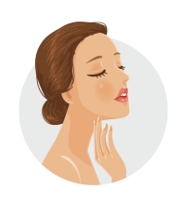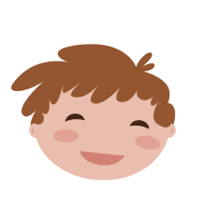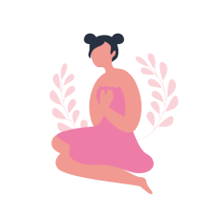Dandruff: Causes, Types, & Treatment
August 30, 2021 2025-04-23 10:25Dandruff: Causes, Types, & Treatment
As an Amazon associate, Dermatocare earns from valid purchase made by clicking on the affiliate links in this blog.

Dandruff: Causes, Types, & Treatment
Dandruff is a common scalp condition that affects people across all age groups, especially during adolescence and early adulthood. Though often dismissed as a cosmetic nuisance, dandruff can sometimes signal an underlying scalp disorder such as seborrheic dermatitis or allergic contact dermatitis.
Understanding what dandruff is, what causes it, and how to manage it effectively can go a long way in improving scalp health and overall hair quality.
What is Dandruff?
In normal scalp physiology, dead cells are continually replaced by new cells — a process that is usually imperceptible. However, when this natural shedding accelerates, the dead cells clump together and appear as visible white or yellow flakes. This non-inflammatory condition is called dandruff.
When this process is accompanied by inflammation — characterized by redness, itching, and greasy scales — the condition progresses to seborrheic dermatitis.
At What Age Does Dandruff Begin?
Dandruff can appear at any age after puberty but is most common during:
- Adolescence and young adulthood (15–35 years) due to increased sebum production under the influence of hormones.
- Middle-aged adults may also experience chronic dandruff, especially in association with seborrheic dermatitis.
It is rare in children and typically absent before puberty unless associated with other scalp conditions such as tinea capitis or cradle cap (in infants).
What Causes Dandruff?
Dandruff and seborrheic dermatitis are primarily caused by an overgrowth of a fungus (typically Malassezia species) that thrives on oil (sebum) secreted by the scalp. The following factors can trigger or worsen dandruff:
- Adolescence: Increased oil production fuels fungal growth.
- Poor Scalp Hygiene: Infrequent or ineffective hair washing allows oil and fungal buildup.
- Oily Scalp and Hair: Excess sebum creates an ideal environment for the fungus.
- Dietary Deficiencies: Lack of zinc, vitamin B-complex, and essential fatty acids can disrupt scalp health.
- Stress: Psychological stress can disturb immune balance and oil secretion, exacerbating dandruff.
- Chronic Illness: Higher incidence in conditions such as HIV/AIDS, Parkinson’s disease, and other long-term illnesses.
Types of Dandruff
- Dry Scalp Dandruff: Fine, white flakes that fall off easily. Common in cold climates or due to harsh shampoos.
- Oily Scalp Dandruff: Larger, greasy flakes that stick to the scalp or hair.
- Seborrheic Dermatitis: Red, inflamed patches with yellowish, greasy scaling, often extending to the ears, eyebrows, and nasolabial folds.
How to Use Anti-Dandruff Shampoo Effectively
Many patients do not benefit from medicated shampoos simply because they are not used properly. Here’s the correct method:
- Choose the Right Shampoo: Look for shampoos containing ketoconazole, zinc pyrithione, selenium sulfide, or coal tar.
- Application Method:
- Apply shampoo directly to the scalp (not starnds) after wetting the hair.
- Leave it on for 3–5 minutes to allow active ingredients to work.
- Massage your scalp to gently dislodge sticky flakes with fingertips.
- Rinse thoroughly and repeat if needed.
- Frequency:
- Use 2–3 times per week initially.
- Reduce frequency once a week dandruff is controlled.
Watch this video to understand how often you should shampoo and how to apply it correctly for dandruff relief. Dr. Surbhi, MD Dermatology, explains it in detail.
Natural Remedies for Dandruff
While medical treatments are often necessary, some natural remedies with scientific support can help reduce dandruff when used correctly:
Aloe Vera and Tea Tree Oil
- Mix 30 g aloe vera gel with 10–15 drops of tea tree oil.
- Apply to the scalp and leave overnight.
- Suitable for oily scalp types.
Lemon Juice in Coconut Oil
- Mix 10 drops of lemon juice in 1–2 tablespoons of coconut oil.
- Apply 2–3 hours before hair wash or leave overnight.
- Helps balance pH and reduce fungal growth.
Ayurvedic Oils
- Oils with neem, tea tree, or ginger extracts.
- For dry scalp, apply overnight.
- For oily scalp, apply 1 hour before wash.
When Should You Consult a Dermatologist?
Seek professional help if you experience:
- Persistent itching, redness, or soreness.
- Scaly patches on the scalp, ears, or face.
- No improvement despite using anti-dandruff shampoos regularly.
- Dryness worsens with use of medicated shampoos — this may indicate allergic contact dermatitis rather than fungal dandruff.
In rare cases, dandruff may be the first sign of a scalp allergy. Ironically, anti-dandruff shampoos may worsen this type of condition, leading to increased dryness or irritation. A dermatologist can help differentiate and treat such cases accurately.
Conclusion
Dandruff may be common, but its causes and treatment are not one-size-fits-all. Understanding the underlying factors — whether it’s oily scalp, fungal overgrowth, stress, or poor hygiene — is crucial to selecting the right therapy. Use medicated shampoos correctly, consider integrating scientifically supported home remedies, and always consult a dermatologist if symptoms persist or worsen.
To simplify your hair care journey, you can now use the Dermatocare Regime Finder tool to manage concerns like dandruff, hair fall, premature greying, and more. This tool provides personalized hair care regimes and product recommendations curated by dermatologists, ensuring targeted, evidence-based solutions for your specific hair type and concern.
ROUTINE FINDER
Get free dermatologist-recommended regime by choosing your skin or concerns.

FACE

HAIRS

CHILD

BODY




